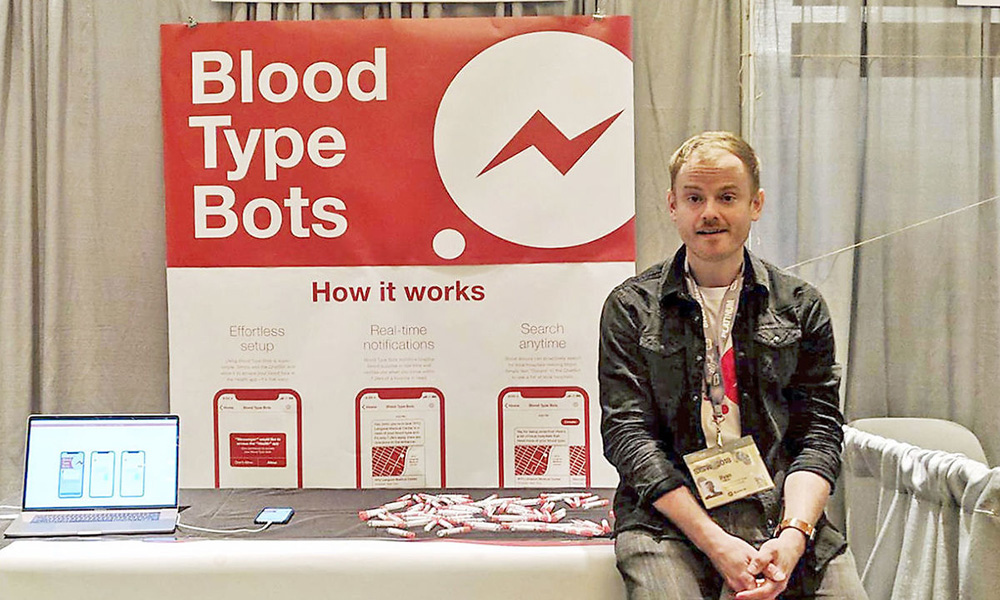After graduating in 2009, econ major Ryan Leckie enrolled in the University of Pittsburgh’s Master of Science program in accounting and landed a job with Big Four accounting firm Deloitte and Touche, while he studied for his CPA exam.
But Leckie soon realized that he wanted to work in a more creative field. He entered a program with the Miami Ad School Europe, in Hamburg, Germany, a place known for producing award-winning and highly creative student projects, and there he met his future partner, Jakub Straka.
That partnership bore fruit a few years later, when in the spring of 2018, Leckie and Straka won the Student Innovation Award for their interactive technology project, “Blood Type Bots,” a way to connect U.S. hospitals and donors through messaging platforms, at the South By Southwest (SXSW) conference in Austin, Texas.
The pair has built a functioning prototype of the system, and there’s already a lot of interest to develop it further, including conversations with a blood donation center that operates in more than half the country. It started when Straka, who was doing a second-year advertising internship in Toronto, had a massive seizure one night in his kitchen and hit his head on the corner of a table.
Luckily, he was staying with two other students, who called an ambulance. But when Straka got to the hospital, they didn’t have his blood type, a rare AB form. The hospital had systems in place and was able to easily get the blood he needed from a nearby hospital, but it got Leckie and Straka thinking.
“We were looking at the technologies, and we realized that this industry is significantly behind in terms of the methods they use to get blood donations.”
“What would happen if there was a mass shooting or a natural disaster that causes a lot of casualties or injuries where a significant amount of blood is needed?” Leckie surmises. “We were looking at the technologies, and we realized that this industry is significantly behind in terms of the methods they use to get blood donations. Based on the data we’ve seen, it’s not as effective as it could be.”
Leckie and Straka’s idea, connects hospitals and donors through messaging platforms such as Facebook Messenger, iMessage, Whats App, or Hangouts.
Here’s how it works: when a specific blood type in a hospital goes beneath a certain threshold, a trigger is set off within the system to automatically send messages out to anyone in the area who has signed up for the Blood Type Bots service, and has that particular blood type.
“One of the issues, in terms of barriers and getting people to donate, is convenience,” Leckie says. “With our program, people get messaged when they’re within a certain distance of the hospital, so they kind of don’t have an excuse.”
Leckie and Straka second-guessed their idea a few times, after repeated unsuccessful submissions to other award shows. Then their project was shortlisted as one of five interactive innovation projects to be showcased at SXSW, a big opportunity for entrepreneurs in the tech environment — and they won the competition.
“Advertising is great,” says Leckie, who is currently working as a junior art director at Grabarz & Partner in Hamburg. “It’s actually what helped me come up with the original idea for the project. But there’s definitely an entrepreneurial side to me that I’m really passionate about. Jakub and I are really excited about the potential impact Blood Type Bots will have when it comes to saving lives.”





